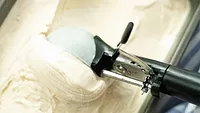Study Demonstrates Accuracy of Rapid Foodborne Pathogen Detection Using AI

Credit: Apex 360 (Apex360_) via Unsplash
Artificial Intelligence (AI) with optical imaging may be a promising solution for detecting pathogens in foods, according to a recent study conducted by researchers with the University of California, Davis.
In the study, researchers tested the abilities of an algorithm, named, “You Only Look Once version 4” (YOLOv4), to detect and classify Escherichia coli. The software-enabled approach has an advantage over typical E. coli detection methods, which require the timely and labor-intensive isolation of bacterial macrocolonies for biochemical or genetic characterization.
The novel bacterial detection method is based on an analysis of morphological differences among bacterial microcolonies, and consists of two steps: microcolony incubation and white light imaging, and real-time detection using the object detection and classification algorithm YOLOv4.
The researchers first established an appropriate cultivation period of 3 hours for E. coli, and tested the method’s feasibility for pathogen enumeration. The approach was shown to enable the rapid quantification of E. coli concentrations.
The study also explored whether YOLOv4 is capable of distinguishing E. coli microcolony features from other spoilage and pathogenic bacteria in food products. The researchers used YOLOv4 to classify E. coli and seven other non-E. coli species, isolated from foods, environments, animals, and humans. The seven other non-E. coli species included Salmonella enterica, Listeria monocytogenes, Pseudomonas fluorescens, Bacillius coagulans, Bacillius subtilis, and Listeria innocua. Integrated with phase-contrast microscopic imaging, YOLOv4 was able to discriminate E. coli from the seven other common foodborne bacterial species with an average precision of 94 percent.
Additionally, to evaluate the performance of the YOLOv4 detector in identifying E. coli in fresh produce, researchers tested the software against E. coli in a romaine lettuce solution. After 3 hours of incubation, YOLOv4, trained with multiple bacterial species, detected E. coli with a false-negative rate of less than 10 percent. The results were validated using a conventional plating assay.
The present method could potentially serve the food industry as a simple, cost-effective, and rapid method to identify pathogen contamination in food products. Alongside the rapidity of the approach, it does not require expensive instruments or significantly trained human resources. The AI-assisted detection presented in the study not only achieves high accuracy in bacterial classification but also provides the potential for automated bacterial detection.
Looking for quick answers on food safety topics?
Try Ask FSM, our new smart AI search tool.
Ask FSM →







